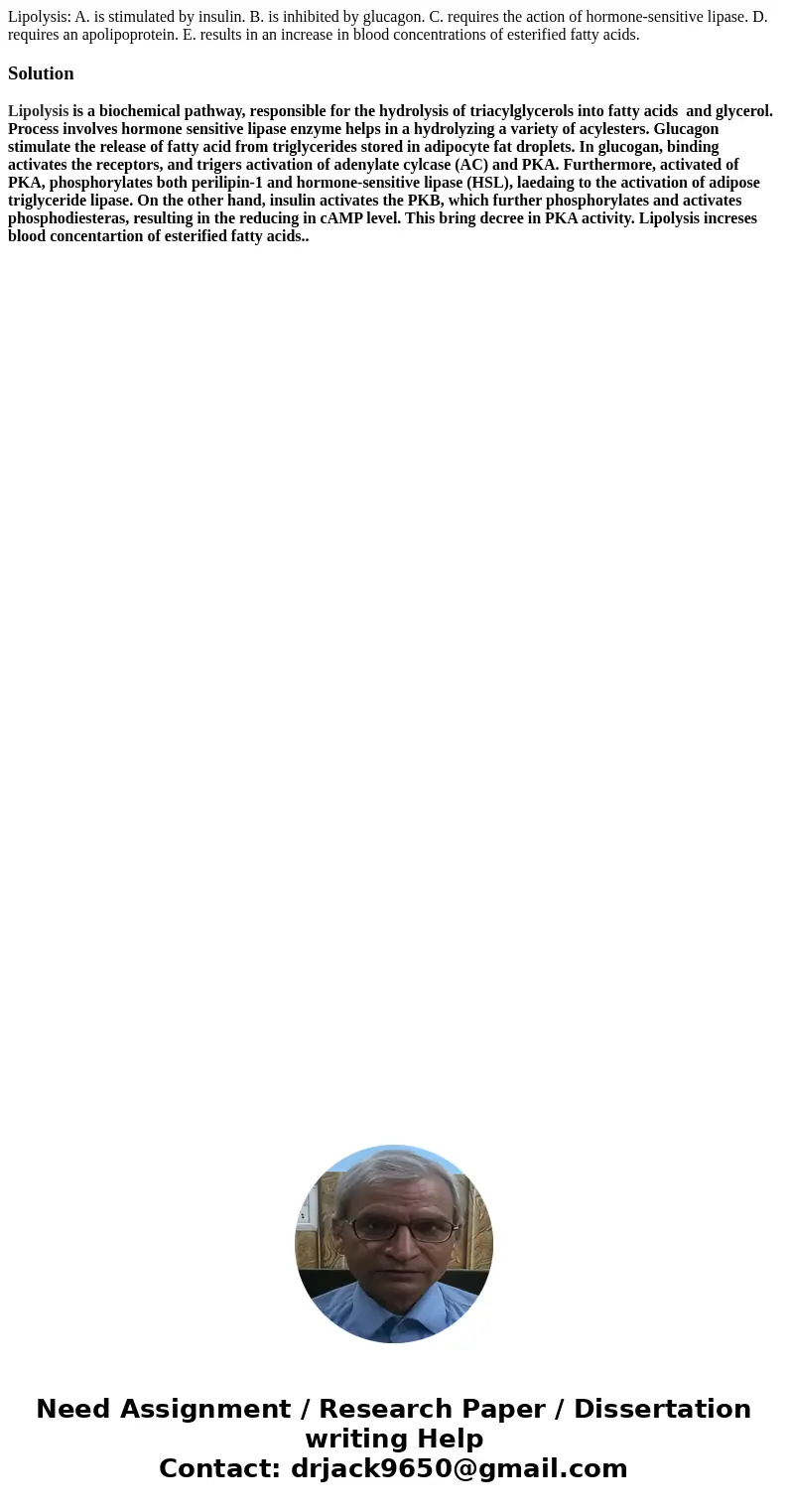Lipolysis A is stimulated by insulin B is inhibited by gluca
Lipolysis: A. is stimulated by insulin. B. is inhibited by glucagon. C. requires the action of hormone-sensitive lipase. D. requires an apolipoprotein. E. results in an increase in blood concentrations of esterified fatty acids.
Solution
Lipolysis is a biochemical pathway, responsible for the hydrolysis of triacylglycerols into fatty acids and glycerol. Process involves hormone sensitive lipase enzyme helps in a hydrolyzing a variety of acylesters. Glucagon stimulate the release of fatty acid from triglycerides stored in adipocyte fat droplets. In glucogan, binding activates the receptors, and trigers activation of adenylate cylcase (AC) and PKA. Furthermore, activated of PKA, phosphorylates both perilipin-1 and hormone-sensitive lipase (HSL), laedaing to the activation of adipose triglyceride lipase. On the other hand, insulin activates the PKB, which further phosphorylates and activates phosphodiesteras, resulting in the reducing in cAMP level. This bring decree in PKA activity. Lipolysis increses blood concentartion of esterified fatty acids..

 Homework Sourse
Homework Sourse